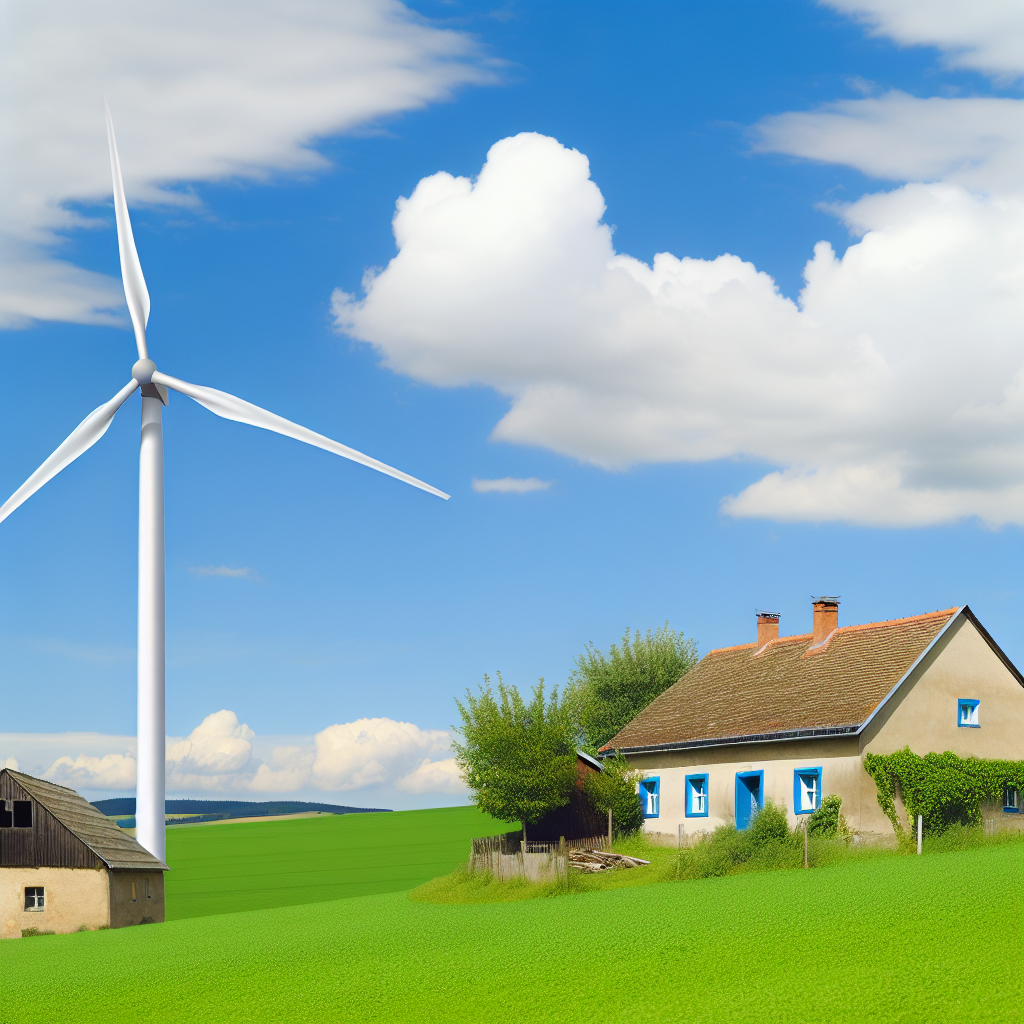How Wind Energy is Revolutionizing the Renewable Energy Industry: Key Benefits and Challenges in 2024
- Introduction
- What is Wind Energy?
- Wind Energy Benefits
- Wind Power Challenges
- Advancements in Wind Energy Technology
- Renewable Energy Industry Growth in 2024
- Future Trends and Forecasts
- Frequently Asked Questions
Have you ever wondered how wind energy is shaping the future of the renewable energy industry? This article will delve into the numerous wind energy benefits and highlight the renewable energy industry growth in 2024, focusing on the advantages and challenges. Stick around, and youll discover everything from technology advancements to future trends.
What is Wind Energy?

Wind energy is generated by converting kinetic energy from the wind into mechanical power using wind turbines. Just imagine standing on a cliffside feeling the strong gusts of wind. That same force drives the blades of a wind turbine, transforming mechanical energy into electricity.
Examples that Connect
Take Johns farm, for instance. John installed several small-scale wind turbines on his property. Previously, he relied on an outdated, costly diesel generator. Now, with wind turbines, his energy bills have significantly decreased, and he has a cleaner source of power.
Another example is the coastal town of Bridlington, which invested in offshore wind farms. These wind farms not only generate enough electricity to power the entire town but also create job opportunities in the renewable sector.
Frequently Asked Questions
What are wind energy benefits?The main benefits include:
- Clean energy: Wind energy is a renewable and clean source of electricity.
- Job creation: New job opportunities emerge in installation and maintenance sectors.
- Cost efficiency: Besides initial investment, operational costs are relatively low.
- Land use: Wind farms coexist with agricultural land, maximizing land use.
Wind Energy Benefits
The multiple advantages of wind power make it a major player in the renewable energy landscape. Lets break down some of the primary benefits:
Environmental Impact:Compared to fossil fuels, wind energy production results in minimal carbon emissions, significantly reducing the greenhouse effect. For example, a single wind turbine can save over 4,000 metric tons of CO2 annually, equivalent to planting nearly 100,000 trees.
Economic Advantages
Wind energy creates new jobs and stimulates local economies. According to the Wind Energy Foundation, the wind industry has added over 100,000 jobs in the United States alone. This opens new opportunities for engineers, technicians, and manufacturers.
Frequently Asked Questions
How does wind energy benefit the economy?Wind energy contributes to the economy by:
- Job Creation: Generating thousands of direct and indirect jobs.
- Tax Revenues: Increasing tax revenues for local authorities.
- Energy Independence: Reducing dependency on imported fuels.
Wind Power Challenges
Despite its benefits, wind energy faces several wind power challenges:
Intermittency:Wind is unpredictable, and this intermittency affects energy reliability. Imagine planning an outdoor event with weather forecasts—sometimes, its sunny, other times, its rainy; similarly, wind availability can vary greatly.
Infrastructure and Maintenance Costs
Initial infrastructure setup is costly. Offshore wind farms require specialized equipment and transportation, driving up expenses. Additionally, regular maintenance is crucial to ensure efficiency and mitigate breakdowns.
Frequently Asked Questions
What are the challenges associated with wind power?Challenges include:
- Intermittency: Wind energy is not consistently available.
- High Initial Costs: Expensive setup and infrastructure costs.
- Noise: Turbines produce noise, which can be a nuisance for nearby residents.
- Environmental Impact: Potential negative effects on bird and bat populations.
Advancements in Wind Energy Technology
The continuous evolution in wind energy technology plays a pivotal role in addressing these challenges:
Smart Grids:Integration of smart grids can help manage intermittent energy supply, ensuring better distribution and reliability.
Frequently Asked Questions
What are the latest advancements in wind energy technology?Recent advancements include:
- Smart Turbines: Equipped with sensors for real-time monitoring.
- Floating Wind Farms: Abyssal offshore locations to harness stronger winds.
- Improved Storage Solutions: Batteries and other storage technologies to store excess power.
Renewable Energy Industry Growth in 2024
The renewable energy industry growth is staggering, with significant contributions from wind energy. According to the International Energy Agency (IEA), wind energy accounts for nearly 15% of global electricity production in 2024.
Frequently Asked Questions
How is wind energy contributing to renewable energy industry growth in 2024?Wind energy is driving the growth by:
- Market Expansion: Numerous countries are increasing their wind energy capacities.
- Innovation: Technological advancements are making wind energy more efficient.
- Policy Support: Governments are implementing supportive policies and subsidies.
Future Trends and Forecasts
The future of wind energy looks promising with several emerging trends:
Hybrid Systems:Combining wind energy with other renewable sources like solar and hydro to create more reliable energy systems.
Frequently Asked Questions
What are the future trends in wind energy?Upcoming trends include:
- Hybrid Renewable Systems: Integration with solar and hydro power.
- Increased Efficiency: New materials and engineering improvements.
- Offshore Wind Expansion: Continued growth in offshore wind farms.
The wind energy revolution is here to stay, offering numerous benefits and occasional challenges. As technology advances and the industry grows, wind power will play an increasingly crucial role in our renewable energy future.
| Region | Installed Wind Capacity (GW) | Growth Rate |
|---|---|---|
| North America | 150.2 | 10% |
| Europe | 220.3 | 8% |
| Asia | 320.1 | 15% |
| Latin America | 40.3 | 12% |
| Africa | 10.2 | 5% |
| Middle East | 3.5 | 7% |
| Australia | 20.6 | 10% |